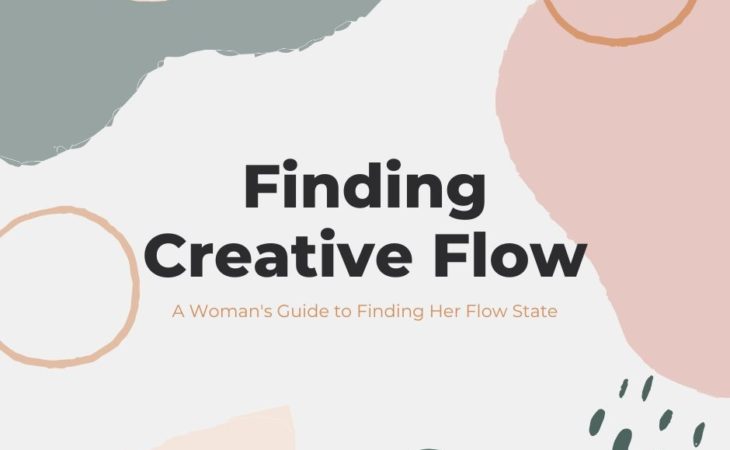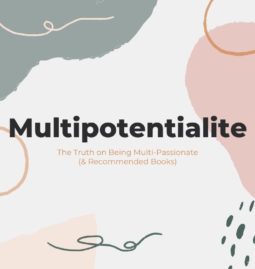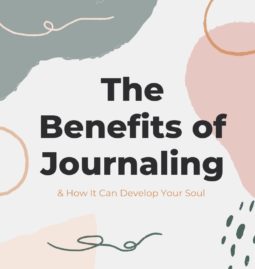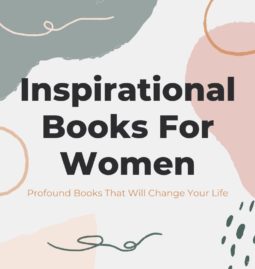When the creative flow fairy pays a visit, that girl is on fire…
In a good way. A productive way. A creative way.
Ask any writer, artist, or musician. If it weren’t for the state of flow to boost our creative productivity, our art would be a very frustrating endeavor (more so than it already is.)
But flow state isn’t reserved for creatives. In fact, anyone can experience flow state – from athletes to artists and more.
So, if you’re in pursuit of your creative flow, here’s how to find it:
- Know what creative flow is
- Identify when it will happen
What is creative flow?
The state of flow, or creative flow, is the state of being completely immersed in a specific task, with complete mental presence, enlivened focus, and limited self-awareness.
In the state of flow, individuals are hyper-focused on creating or achieving, and outside distractions, intrusive thoughts, and inhibitions have a limited influence on the creator’s mental state.
A creative flow state is the lifeblood of productivity when it comes to creative projects or tasks that require heavy concentration.
Creative flow, flow state, flow zone, or just “flow” – whatever name it’s referred to as, it’s generally describing the same.
When does flow happen?
Although the state of creative flow is often attributed to artistic work, or in writing, anyone can achieve flow.
Many people don’t realize that the state of flow can affect people engaged in any task – as long as it requires a high level of concentration for the person.
Creative flow can happen during these activities:
- Art. Visual artists that paint, sketch, sculpt, and/or draw experience flow.
- Writing. Authors and writers of all types and genres can enter flow during their writing process.
- Music. Those that play musical instruments, conduct, produce, and/or sing enter flow state.
- Photography. Similar to artists, photographers can experience creative flow, too.
- Exercising. Ever heard of runner’s high? That’s a common example of a state of flow that happens for some during exercising.
- Sports. Athletes that are highly focused while playing a sport enter a flow state.
- Sex. This is one act that you probably didn’t realize is associated with flow, but once you think about it, it makes sense!
- Meditation. Creative flow happens often during deep meditation practices.
- Cooking & Baking. While everyday cooking may not cause you to enter a flow state, if you have a passion for the art of cooking, baking, or decorating, you can definitely feel flow while in the act.
What does creative flow feel like?
Creative flow feels like total immersion and energetic focus, often with a joyful or peaceful feeling where you’re able to numb other feelings and tune out to the world.
Think of a time you’ve been so absorbed in your work, and when you finally “snap” out of it, you’re like, “Where did the time go?”
That zone of complete concentration and immersion is flow. For some people, it can be euphoric.
Quotes On Flow State
To better help you understand just exactly what flow state is and how it can feel, let’s turn to some quotes that describe flow state.
Here are some well-known quotes on creative flow:
- “Those who flow as life flows know they need no other force.” Lao Tzu
- “Let it come, let it go, let it flow.” Anonymous
- “Unleash your creative energy and let it flow. Relish the possibilities.” Nita Leland
- “Surrender to the flow.” Mike Gordon
7 Books to Read On Flow
- Flow: The Psychology of Optimal Experience
- Flow: The Secret to Happiness [Ted Talk]
- Flow: The Psychology of Happiness
- Creativity: Flow and the Psychology of Discovery and Invention
- The Rise of Superman: Decoding the Science of Ultimate Human Performance
- Creative Flow: A Year in My Mindful Life
- Finding Flow: The Psychology Of Engagement With Everyday Life
- Creativity Takes Courage: Dare to Think Differently
- The War of Art
- The Artist’s Way
- Creative Confidence: Unleashing the Creative Potential Within Us All
- Your Brain at Work: Strategies for Overcoming Distraction, Regaining Focus, and Working Smarter
Tips for Finding Your Creative Flow
#1 – Eliminate all distractions.
As much as you can, try to eliminate any and all outside or external distractions that prevent you from concentrating.
What distracts others, may not distract you, so be sure to take a deep look at how you work best.
For example, some people need to have an absolutely quiet environment, because they work best with dead silence. But other people – like me for instance – find dead silence to be distracting, and concentrate best with light noise in the background, such as white noise, coffee shop chatter, or nature sounds like birds singing.
Think about how you concentrate best and what you find distracting, and try to get rid of those distractions before you plunge into your work or activity.
If you haven’t yet figured out how you work best, start being conscious of your level of concentration as you explore your productivity.
At the minimum, you can eliminate all obvious distractions, like your toddler screaming in the background (nap time work, anyone?) or your grumbling stomach (eat, please!).
Here are some tools to help you eliminate distractions:
- Freedom App.
- Brain.fm
- Antisocial.
- KeepMeOut.
- Strict Workflow.
- Focus At Will.
- FocusWriter.
#2 – Work at your most productive time.
The time of day affects our biological productivity performance big time.
Not everyone works best in the morning, although this is a popular timeframe for many people.
Night owls get bursts of energy and creativity when they work in the evening, or even late at night.
Your lifestyle can also affect the time you feel most productive.
Let’s say you work early morning shifts, but are naturally a night owl. Because your biological clock has seemingly been reset to work in the morning, you likely won’t feel like being super productive and concentrating at night when it’s on a day you worked an 8+ hour shift.
Use these questions to help you determine the best time of the day to work:
- When do I have the most energy? Think about your history of productivity. Is there any specific time you feel pumped to work? When do you feel most enthusiastic about being productive and burning some creativity?
- At what time of the day will I be least distracted? This will depend on your lifestyle. If you have outside responsibilities like kids, pets, or a partner, you’ll have to consider when they are around and expect you to be around. You also have to plan around your everyday schedule. Of course there will always be un-planned distractions that pop-up, so think about when these distractions are less likely to happen.
- When can I afford to spend time and energy on a task? Even if you’ve discovered the time of day your most productive, that may not mean you’re able to carve out time for your task during that time. Unfortunately for most of us, we have schedule demands from work that prevent us from being completely flexible with our time. If you work best in the mornings, but are committed to your inflexible 9-5 job, you may have to just get creative with your time.
#3 – Free any internal blocks
This one can be tricky, depending on who you are. Releasing any internal blocks that prevent you from concentrating is key to helping you find your flow zone because internal blocks fall under the category of distractions.
If you’re someone that seeks out a concentrated task or creative project to get your mind off things when your emotions are taking you for a ride, then your internal blocks may be different than the next persons.
For example, I’m very much the type of person that drowns herself in work when I’m feeling emotionally overwhelmed. I bury myself in a project or task because it gets me thinking about something else other than the nagging problem that’s causing me to feel extreme emotions.
In this case, my internal blocks aren’t necessarily my emotions, but my lack of emotions. I find it hard to concentrate or stay focused when I’m feeling content.
Maybe you’re the same way?
Or maybe you’re the type that needs to clear your mind before you dive in to a task. Maybe you just can’t focus when you’re wrapped up in your feelings. In this case, your extreme emotions might be an internal block to your creativity or concentration.
Whatever the case, these internal blocks – whatever they may be for you – will prevent you from finding your flow.
So how do you clear them out?
Here are three ways to clearing any internal blocks:
- Meditate. Meditating is the process of focusing your attention and awareness to achieve mental clarity, and emotional calm. You can If you’re new to meditation, try an app like Calm or Headspace, or just head to YouTube for some guided tutorials.
- Journal. If you’re feel overwhelmed with thoughts and emotions, try journaling to let it all out.
- Talk it out. If you’re generally someone who needs to talk something out to process your feelings and feel better about a situation, call a loved one or friend to vent.
- Shower or bathe. This one always helps me feel better. Something about a relaxing shower, where it’s just you in all your naked glory and exhilarating water can make you feel 80% better about something.
- Exercise. Sometimes all it takes is to get those endorphins going! Try going for a walk or run, or engaging in a physical activity to help you clear out any internal blocks and get your mind right.
#4 – Consider your hierarchy of needs
If you’ve herd of Maslow’s Hierarchy of Needs, you already know that humans have specific levels of needs that need to be met before they can even begin to think of meeting other needs.
Maslow’s hierarchy of needs is basically how we can prioritize meeting specific needs we have in order to function and prosper.
In order to achieve love and belonging, esteem, and/or self-actualization, your physiological needs and safety needs must be met first.
This means that before you’ll be able to find a flow state, you should take care of any physiological needs like water, food, and shelter.
This especially means that you must have enough sleep. Sleep is a huge factor in being able to concentrate and find your creative flow, so don’t skip out on it.
Key takeaways for finding flow and your needs:
- Get enough sleep. Without sleep, you’ll find it hard to focus and be productive, which decreases your chances of finding creative flow.
- Get hydrated. Make sure you’re not thirsty, and have a glass of water next to you as you work.
- Eat a nutritious meal. Hunger distractions can prevent you from focusing, and make it difficult to enter a flow state, so be sure to eat a nutritious snack or meal to fill up before you start creating. Be mindful of what you eat, since junk food tends to make us feel sluggish and sleepy.
#5 – Optimize your environment
Your work area can have a huge effect on your state of mind. Depending on the type of person you are and the space that you’re attracted to, your work environment can be optimized for your own productivity.
Maybe you feel overwhelmed and find it hard to concentrate in messy areas. If that’s the case, be sure to choose a clean, organized space to operate out of.
I also highly suggest working in the same environment, like having a dedicated room or space to work out of. This helps train your brain into entering work mode as soon you situate yourself in your work space.
#6 – Focus on one specific task
Overwhelm kills creativity.
When you try to induce creative flow, make sure it’s for one specific task or project that you’re working on.
I like to plan out what specific part of a project I want to complete beforehand. If I get more done, great. But my end goal is to at least achieve the one specific task I set out for.
But if you don’t particularly work well with structure, don’t feel like you have to plan out your project. Sometimes structure itself is limiting. In that case, just go with the flow.
#7 – Choose the right level
As you choose a part of the project to focus on, make sure it’s the right level of difficulty. This is important for finding flow.
The project task or creative endeavor shouldn’t be too hard or too easy. It needs to have a balance of the right level – difficult enough for you to stay focused on the problem, but easy enough to where it’s not going to make you pull out your hair.
Depending. onthe project you’re working on, it can be difficult to gauge the difficulty level beforehand.
The key is to always be as prepared as you can.
For example, if I’m working on writing a chapter in my book that requires a lot of research, I need to make sure I have the majority of the research on hand and prepared before I start writing. Otherwise, I won’t be able to write and find my flow because I’ll be stumbling on the information holes and gaps that I don’t know the answer to.
#8 – Time Block
Time blocking can do wonders for many people, so if you haven’t already, give it a try!
Time block in increments of 90 minutes for optimal productivity and concentration. For me, it’s the perfect amount of time for diving into a task, without exhausting my mental efforts. It takes the first 20 minutes for me to find a cadence of concentration and get situated with a project.
Time blocking is effective because it’s specific and allows you to focus on one task within a given timeframe.
I particularly like using the Pomodoro Technique, which makes me work in bursts of time increments.
#9 – Don’t overthink it
There’s nothing that kills creativity and the ability to find your creative flow by overthinking the process.
Usually, flow state just happens. You can take all the pre-emptive measures to encourage creative flow to pay it’s visit, but ultimately, you can’t control when it comes necessarily.
Overthinking it and frustrating yourself into finding it will just prevent it from coming because you’ll be more focused on finding flow than you are on your concentration.
In the end, the more pressure you put on yourself to finding creative flow, the less chances you’ll induce it.
Regardless of what you accomplish with or without flow, any progress on your creative project or work is worth celebrating.
Progress is progress. Flow-induced or not.
So keep up the hard work, experiment with your productivity patterns, and continue making goals for yourself.
And most importantly: Keep creating.



